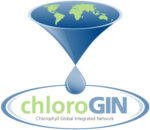18-22 Sept 2006, Plymouth Marine Laboratory, UK
The meeting consisted of three components: 1) a plenary planning meeting, 2) a satellite remote sensing technical workshop and 3) an in situ observations technical and calibration workshop. The 44 participants represented Latin America, southern and east Africa, India, China, Thailand, Sri Lanka, the Joint Research Centre of the European Commission, and the sponsors: the Plymouth Marine Laboratory, GOOS, GEO and POGO. Over 90% of the participants were under 50 years old and more than half under 40. Most had been previously trained under the auspices of the IOCCG and POGO.
The aim of the project is to deliver products, namely maps of ocean chlorophyll and sea surface temperature, as indicators of the state of the ecosystem needed for ecosystem and fisheries management, and at some sites, a measure of light penetration into the ocean needed, along with the other two variables, to calculate plankton primary production. These are three of the core variables recommended for the Global Coastal Network listed in the GOOS Coastal Panel strategic plan. The value of decades-long time series is illustrated by two case studies relating fish catch fluctuations to inter-annual ocean chlorophyll variations in a spatial context. The meeting and workshops were outstanding successes, resulting in many technical recommendations given in the full report. Amongst the most important general recommendations are: The project should have three initial principal regional centres, in Latin America, southern Africa, and India linked by good communications to three northern centres in UK, the European Commission, and USA. During the first five-year phase, map products would be regularly updated on a web site at each centre, while the infrastructure is improved and personnel trained at new centres. During the second five-year phase, the existing centres would become fully operational with a range of products suited to local needs, and new centres developed. Several case studies of existing uses for remotely-sensed ocean chlorophyll products are given in the full report: 1) Monthly State of Environment Reports for fisheries management (Namibia), 2) Maps of Ocean Chlorophyll around Latin America (Antares Network), 3) Short-term forecasts of harmful algal blooms for fisheries (BCLME programme, South Africa), 4) Directing research vessels to dynamic ocean phenomena for process studies (Plymouth Marine Laboratory, UK), and 5) Fuel-saving by directing fishing vessels to ocean fronts and convergences (India). The meeting concluded that there is enormous synergy to be gained from linking national and regional centres together to form an integrated network including both satellite and in situ observations, and suited to local needs.
Principal recommendations:
1) That the ChlorOGIN network be implemented with immediate effect, linking existing national and regional centres;
2) That the appropriate bodies ensure that continuity of satellite ocean colour sensors is achieved to provide inter-calibrated long time series of surface ocean chlorophyll and SST;
3) That in situ time-series of surface and sub-surface observations be made at each regional centre to support the satellite measurements by integration/combination in a manner that suits local societal and scientific needs;
4) The need for homogeneity/compatibility of protocols (e.g. for match-ups), procedures and analysis tools/practises be recognised and that members of the network move towards common protocols;
5) That physical infrastructure (such as the connection between networks and receiving stations, data distribution, materials required to adopt best practice protocols for in situ measurements) and human capacity be developed in existing and new centres to expand the network in two five-year phases;
6) That communications bandwidth be improved in most developing countries, as this limits the delivery of ocean chlorophyll and related products and is more important than satellite ground receiving stations;
7) That funding be sought for development of the ChlorOGIN Network from national bodies, the Large Marine Ecosystem programmes, and other sources.
Participants:
John Field (GOOS) Co-chair
Trevor Platt (IOCCG) Co-chair
Shubha Sathyendranath (POGO) Organiser
Nick Hardman-Mounford (PML) workshop organiser
Vivian Lutz (Antares) workshop organiser
Mike Rast (GEO) (for co-sponsor)
Gavin Tilstone workshop organiser
List of Acronyms:
Antares: Name of a Latin American network including ocean chlorophyll estimations
BCLME: Benguela Current Large Marine Ecosystem programme
ChlorOGIN: Chlorophyll Ocean Global Integrated Network
GEO: Group on Earth Observations
GOOS: Global Ocean Observing System
IOCCG: International Ocean Colour Co-ordinating Group
JRC: Joint Research Centre of the European Commission, Ispra, Italy
PML: Plymouth Marne Laboratory, UK
POGO: Partnership for Observations of the Global Ocean


